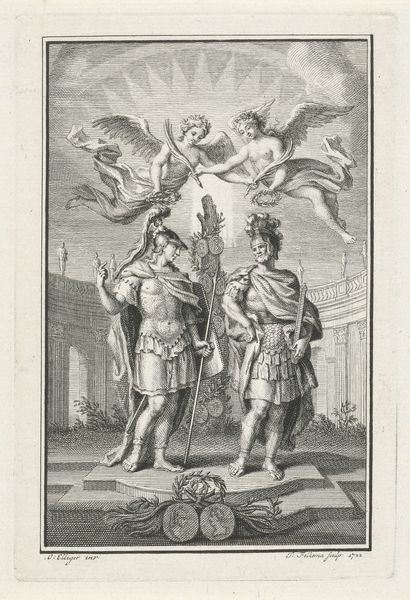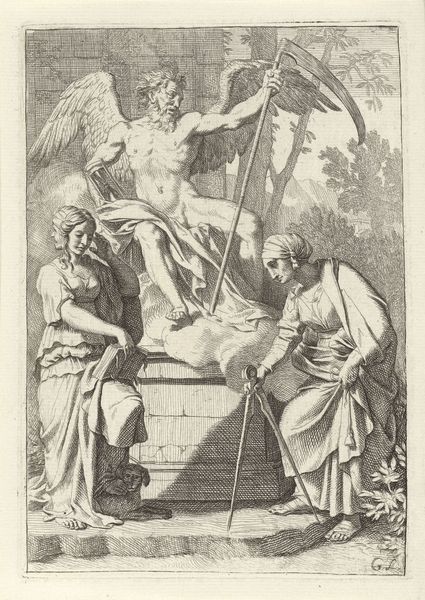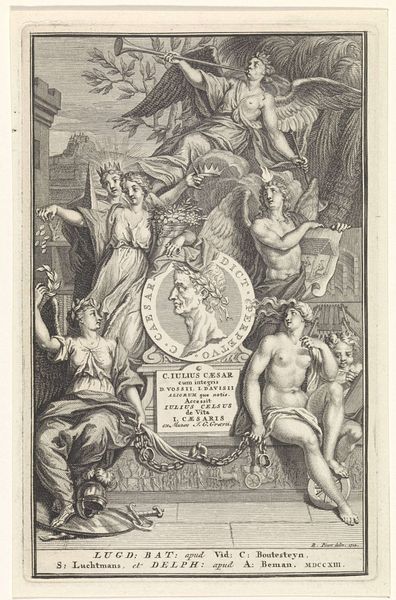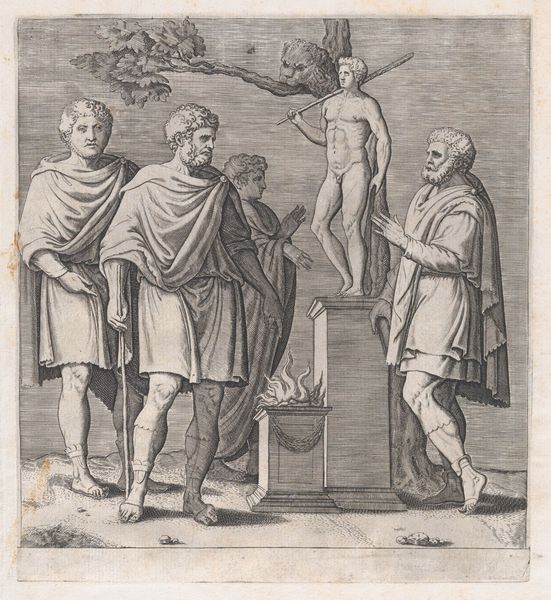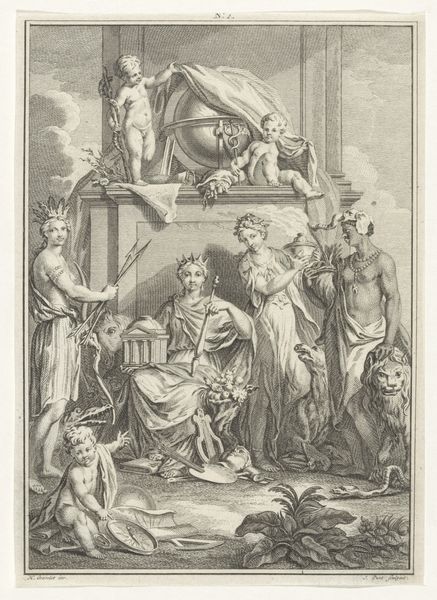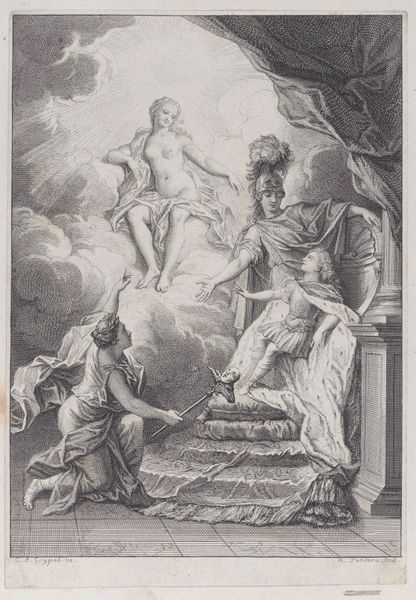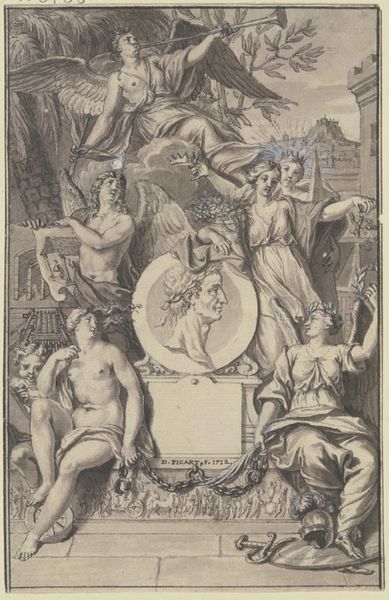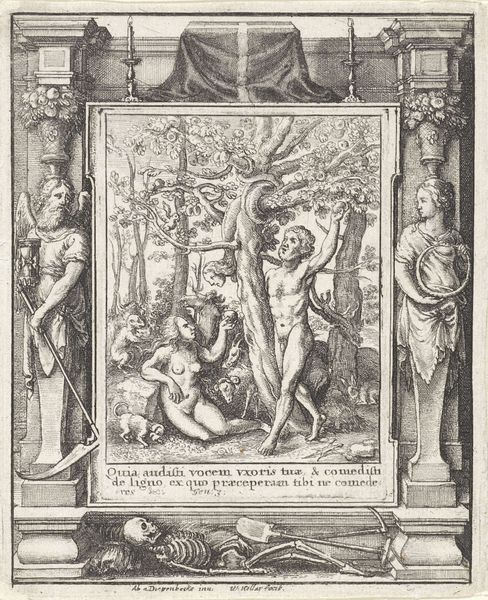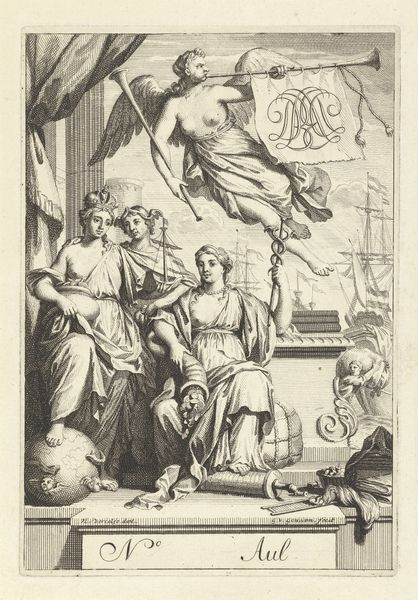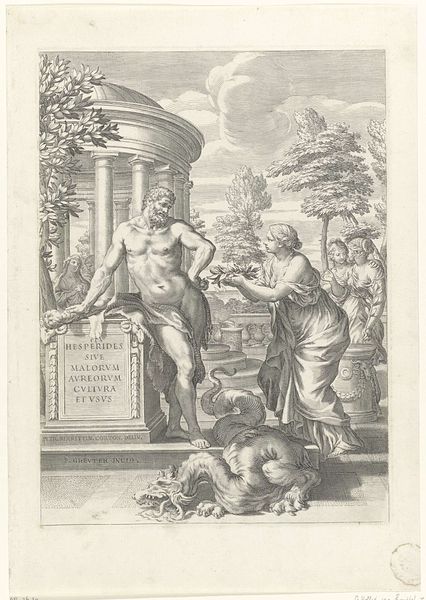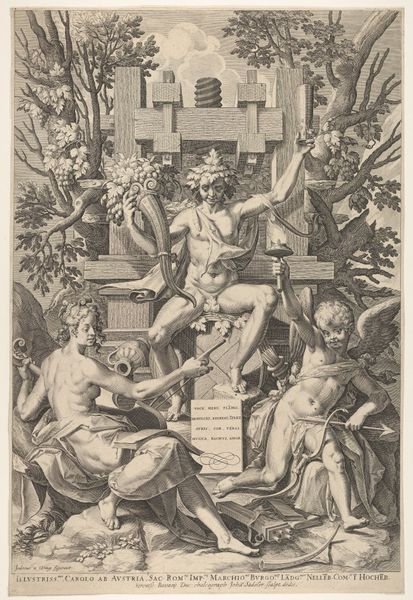
engraving
#
allegory
#
baroque
#
figuration
#
history-painting
#
engraving
Dimensions: height 75 mm, width 64 mm
Copyright: Rijks Museum: Open Domain
Editor: Here we have Bernard Picart’s engraving, “Apollo lauwert twee muzen,” created in 1712. It feels like a very staged, theatrical scene. What kind of dialogue do you see between mythology, power, and artistic expression in this work? Curator: The theatricality you observe is key. Think about Baroque art as a form of propaganda. How does this idealized representation of Apollo, flanked by muses, reinforce certain power structures? Editor: I guess it presents an image of enlightened rule? Curator: Exactly. Consider who these images were created for and who they were meant to influence. Are there absences here too? Who isn’t represented in this seemingly universal embrace of the arts? The classical subject matter reinforces an idealised view of the ruling classes of the time. Editor: It seems like the figures have almost been extracted from an oil painting to serve a new propaganda purpose. The work appears very crisp. Curator: Engravings like this were often disseminated widely, circulating specific ideologies far beyond the elite circles that originally commissioned them. Look at how gender roles are represented; Apollo is central and passive while the muses appear to serve or complement his role. How does that inform your reading? Editor: So, by emphasizing this historical and cultural context, we move past simply admiring the aesthetics to understanding its role in shaping perceptions and reinforcing social hierarchies. I learned more about thinking about visual art beyond what my eyes see. Curator: Absolutely. It's about engaging with the artwork as a cultural artifact, prompting conversations around representation, power, and historical context. It makes you realise that we need to keep pushing to democratize our understandings of art and what it means to our lives.
Comments
No comments
Be the first to comment and join the conversation on the ultimate creative platform.
